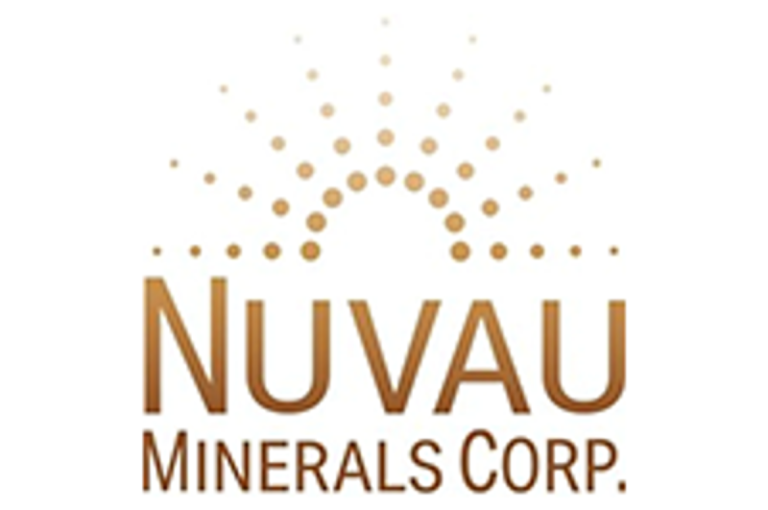Nuvau Minerals Inc. (TSXV: NMC) has begun its minimum 1,500 m drill program aimed at testing continuity and extensions to the orogenic gold system discovered last month. The discovery was made with the first hole drilled of an inaugural gold-focused exploration program, in the footwall of the Bracemac-McLeod Mine approximately 200 m below surface. The follow-up program is being drilled immediately north east of this base metal mine, which was in production until mid 2022.
The Matagami Property is in the northern Abitibi Region of Quebec, one of the world’s most prolific gold endowed districts. This northern part of the Abitibi region includes Canada’s largest gold producing mine with the country’s largest gold mineral reserves: the Detour Lake Mine owned by Agnico Eagle Mines Limited. Hecla Mining Company’s Casa Berardi Mine, which has produced over 3 million ounces of gold, is located to the southwest of the Matagami Property (see Figure 1 below).
While the Abitibi’s first recorded gold discovery was 119 years ago in Rouyn-Noranda, the Matagami Property remains one of the largest areas in the region that has not been subject to a gold focused exploration program. Previous owners were concentrating on defining and developing multiple VMS deposits into multiple mines that produced extensive copper and zinc for more than 60 years. This was one of the primary opportunities Nuvau identified when it entered into the agreement to acquire the Property from Glencore. The Company recently began compiling gold related historic data, as well as launching several gold-focused initiatives (including till sampling) aimed at defining initial targets for drilling.
Figure 1: Matagami property location
To view an enhanced version of this graphic, please visit:
https://images.newsfilecorp.com/files/11236/262123_8f984e3ef4857b89_001full.jpg
Nuvau’s current gold-focused exploration program has identified three initial priority targets:
- Bracemac Footwall Discovery
- Gold-in-Till Anomaly Target
- Thunder Mine (1988) Target
The map below shows the location of these three targets (Figure 2). The vast majority of this 1,300 km2 land pack remains open for gold exploration.
Figure 2: Current gold targets
To view an enhanced version of this graphic, please visit:
https://images.newsfilecorp.com/files/11236/262123_8f984e3ef4857b89_002full.jpg
1. Bracemac Footwall Discovery
The recent discovery of gold mineralization in the footwall of the Bracemac Mine is located only 25 m from the access ramp of this permitted mine. The steeply dipping, strong shear zone structure with quartz veining mineralized with pyrite and locally visible gold was intersected at a depth of approximately 200 m. The visible gold was observed over approximately 0.5 m of core and assays are still pending on the discovery hole, BRCG-25-001.
Although located within the immediate footwall of the past-producing Bracemac-McLeod mine, the mineralized structure occurs in a late intrusive that truncated the mine host rock units (see Figure 3). The intrusive has seen very little drilling as the stratigraphy was not of interest for VMS exploration.
The follow up drill program is now underway to continue to step-out both up and down dip, and along strike, to test continuity of mineralization within the structural corridor as well as providing critical data on the dip and strike of the vein.
Figure 3: Past producing Bracemac-McLeod Mine and relative position of gold target drilled (left); schematic of the stratigraphy (right)
To view an enhanced version of this graphic, please visit:
https://images.newsfilecorp.com/files/11236/262123_figure3.jpg
Figure 4: Visible gold found in more than 30 gold chips identified in logging the core
To view an enhanced version of this graphic, please visit:
https://images.newsfilecorp.com/files/11236/262123_8f984e3ef4857b89_005full.jpg
2. Gold-in-Till Anomaly Target
As part of Nuvau’s target generative exploration program, an overburden (till) drilling program was launched in 2023. This program resulted in the discovery of significant gold-in-till mineralization that was announced on March 4, 2025.
From the 2023 sonic drill program, hole PD-23-030s produced a notable gold grain anomaly detected at a depth of between 29.26 to 29.87 m in the overburden and featured more than 2,000 gold grains per 10 kg of material. In addition, a near-contiguous sample with 295 gold grains per 10 kg of material between 31.12 to 32.00 m was also encountered with the interval between consisting of a large locally derived boulder. Based on the almost pristine nature of the gold grains, and their close proximity to the bottom of the hole, the source is expected to be relatively close to this hole. (See images of gold grains below in Figure 5.)
To assist in defining targets in this area, a detailed drone MAG survey was completed. The limited rock outcrops were also mapped recently and together with the MAG data, a drill program is being designed for later this year. The objective of this drill program will be to gain a better understanding of the local geological structures and to test for the potential source of the extensive gold grains.
Figure 5: Mosaic of backscattered electron images of gold grain
To view an enhanced version of this graphic, please visit:
https://images.newsfilecorp.com/files/11236/262123_figure5.jpg
Notice the delicate textures and silicate attachments. LEFT: Image of 230 gold grains found in sample 155320186, hole PD-23-030s, RIGHT: Image of 112 gold grains found in adjacent sample 155320187.
3. Thunder Mine (1988) Target
The Thunder Mine property was acquired by Nuvau in 2023 for its potential for both base metal and gold mineralization. In 1988, Thunderwood Exploration Ltd. drilled a series of holes as follow-up to a 1959 hole that intersected copper mineralization (see Figure 6).
This follow-up program identified multiple gold-bearing structures; however, no subsequent follow-up work was completed. Highlight intercepts from the available public domain report include the following:
- DT-14-88: 209.00 – 209.80 m (0.80 m) @ 26.40 g/t Au.
- DT-10-88: 205.00 – 206.00 m (1.00 m) @ 78.16 g/t Au.
- DT-18-88: 100.80 – 107.30 m (6.50 m) @ 1.55 g/t Au, incl.: 0.30 m @ 4.89 g/t Au.
- DT-19-88: 226.00 – 231.00 m (5.0 m) @ 2.27 g/t Au, Incl.: 0.50 m @ 10.39 g/t Au.
- DT-20-88: 136.80 – 137.10 m (0.30 m) @ 10.37 g/t Au and 204.50 – 205.00 m (0.50 m) @ 6.48 g/t Au.
- DT-21-88: 310.50 – 319.90 m (9.40 m) @ 4.02 g/t Au, incl.: 0.70 m @ 42.03 g/t Au and 0.70 m @ 7.30 g/t Au.
These results been extracted from historical information, and are not compliant with NI 43-101. The original results are available via GESTIM, GM 48216, and GM 08790 at the following links:
Thunder mine drilling is planned as part of Nuvau’s winter drilling program in Q1 2026.
Figure 6: Thunder Mine Past drilling
To view an enhanced version of this graphic, please visit:
https://images.newsfilecorp.com/files/11236/262123_8f984e3ef4857b89_012full.jpg
About Nuvau Minerals Inc.
Nuvau is a Canadian mining company focused on the Abitibi Region of mine-friendly Québec. Nuvau’s principal asset is the Matagami Property that is host to significant existing processing infrastructure and multiple mineral deposits and is being acquired from Glencore.
Qualified Person and Quality Assurance
Bastien Fresia P. Geo. (Qc), Technical Services Director of Nuvau and a ‘qualified person’ as is defined by National Instrument 43-101, has verified the scientific and technical data disclosed in this news release, and has otherwise reviewed and approved the scientific and technical information in this news release.
Drill core samples are sawn by staff technicians to create half core splits. One split is retained in the drill core box for archival purposes with a sample tag affixed at each sample interval and the other split is placed in a labelled plastic bag along with a corresponding sample number tag and placed in the shipment queue.
Quality control samples including blind certified reference material (‘CRM’), blank material, and core duplicates are inserted at a frequency of 1 in every 20 samples and sample batches of up to 60 samples were then shipped directly by Nuvau personnel to the ALS Canada Ltd. preparation laboratory in Rouyn-Noranda, Québec.
All submitted core samples are crushed in full to 95 % passing less than 2 mm (ALS code CRU-32). A 1000-gram sample was then riffled split from the crushed material and pulverized to 90 % passing 75 μm (SPL-22 and PUL-32a). Pulps are shipped from the preparation laboratory to ALS Canada Ltd.’s analytical lab in North Vancouver, British Columbia, for assay.
Lead, silver, copper and zinc analyses were determined by ore grade four acid digestion with an inductively coupled plasma atomic emission spectroscopy (‘ICP-AES’) or atomic absorption spectroscopy (‘AAS’) finish (ALS codes Pb-OG62, Ag-OG62, Cu-OG62 and ZnOG62), whereas gold was determined by 50 g fire assay analysis with an AAS finish (code Au-AA23).
ALS Canada Ltd. is an accredited, independent commercial analytical firm registered to ISO/IEC 17025:2017 and ISO 9001:2015.
For further information please contact:
Nuvau Minerals Inc.
Peter van Alphen
President and CEO
Telephone: 416-525-6023
Email: pvanalphen@nuvauminerals.com
Cautionary Statements
This news release contains forward-looking statements and forward-looking information (collectively, ‘forward-looking statements’) within the meaning of applicable securities laws. Any statements that are contained in this news release that are not statements of historical fact may be deemed to be forward-looking statements. Forward-looking statements are often identified by terms such as ‘may’, ‘should’, ‘anticipate’, ‘will’, ‘estimates’, ‘believes’, ‘intends’ ‘expects’ and similar expressions which are intended to identify forward-looking statements. More particularly and without limitation, this news release contains forward-looking statements concerning drill results relating to the Matagami Property, the results of the PEA, the potential of the Matagami Property, the timing and commencement of any production, the restart of the Bracemac-McLeod Mine, the completion of the earn-in of the Matagami Property and the timing and completion of any technical studies, feasibility studies or economic analyses. Forward-looking statements are inherently uncertain, and the actual performance may be affected by a number of material factors, assumptions and expectations, many of which are beyond the control of the Company, including expectations and assumptions concerning the Company and the Matagami Property. Readers are cautioned that assumptions used in the preparation of any forward-looking statements may prove to be incorrect. Events or circumstances may cause actual results to differ materially from those predicted as a result of numerous known and unknown risks, uncertainties, and other factors, many of which are beyond the control of the Company. Readers are further cautioned not to place undue reliance on any forward-looking statements, as such information, although considered reasonable by the management of the Company at the time of preparation, may prove to be incorrect and actual results may differ materially from those anticipated.
The forward-looking statements contained in this news release are made as of the date of this news release, and are expressly qualified by the foregoing cautionary statement. Except as expressly required by securities law, neither the Company nor Nuvau undertakes any obligation to update publicly or to revise any of the included forward-looking statements, whether as a result of new information, future events or otherwise.
Neither the TSX Venture Exchange nor its Regulation Services Provider (as that term is defined in the policies of the TSX Venture Exchange) accepts responsibility for the adequacy or accuracy of this news release. No stock exchange, securities commission or other regulatory authority has approved or disapproved the information contained herein.
To view the source version of this press release, please visit https://www.newsfilecorp.com/release/262123










